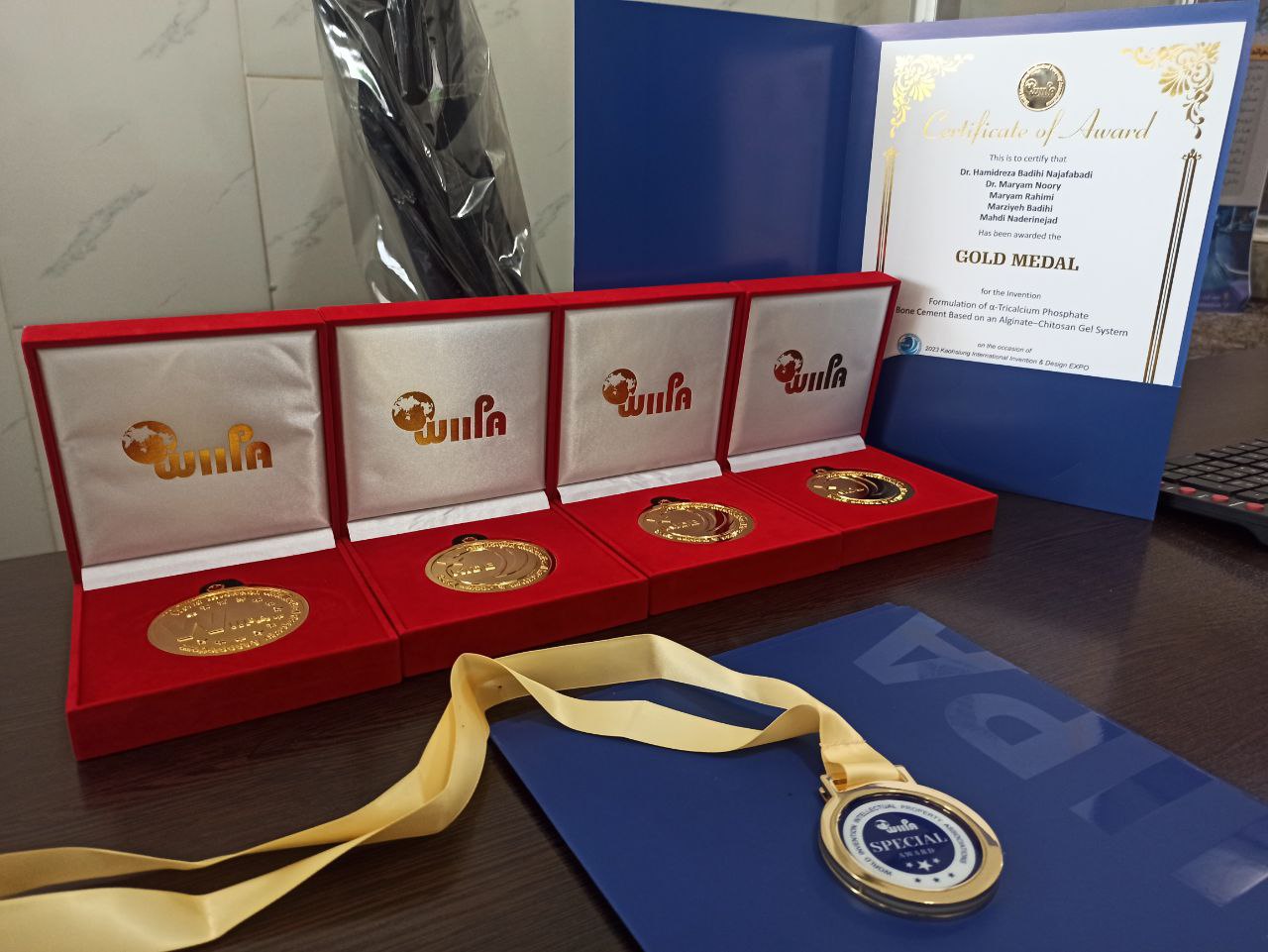NOURNEWS- About two weeks ago, at a specialized conference on the application of modern science in shrimp farms in Qeshm, a recombinant medicine made from shrimp skin for repairing bone lesions was unveiled in both oral and vaccine forms.
This recombinant medicine is prepared with a combination of other substances such as calcium in both oral and vaccine forms and is used to repair bone lesions such as osteoporosis, fractures, and bone arthrosis.
This drug, which was invented by Dr. Maryam Noory Balaneji from the Qeshm Free Zone Organization and Dr. Hamidreza Badihi Najafabadi from the Sheikh Bahá'í Research Complex in Najafabad and colleagues, is the first-place winner of the WIPA competition in Taiwan, the winner of five gold medals of the world elites in this global competition and a full scholarships have been given from Finland for one of the inventors of this drug.


In recent years, calcium-based cement composites for medical applications have received a lot of attention in the world, and calcium compounds are among the compounds that are used in tooth root restoration.
In the production of this new type of drug, to maintain and strengthen the properties compared to other drugs in the market, the biodegradable and biocompatible polymer “Chitosan” has been used to increase the gripping and structural properties of the product in question.
In this medicine, a combination of calcium silicate, Dicalcium phosphate (DCP) and Bismuth(III) oxide (Bi2O3) is used as a powder phase and chitosan polymer as a 3% solution dissolved in 1% acetic acid as a liquid phase.
The control sample of this drug was obtained by mixing the powder phase with distilled water as a liquid phase and by adding chitosan polymer, the setting time of composite cement was changed from 51 minutes to 67 minutes.
The bioactivity of these cements was investigated for 14 days in body simulation solution (SBF) and the samples were subjected to microstructure analysis by SEM and phase identification by XRD device before and after immersion in SBF solution.
The composition of cement before immersion included initial phases (calcium silicate and calcium phosphate phases) which after 14 days of immersion in SBF solution were transformed into hydroxyapatite layered phases and the addition of chitosan did not affect the formation of the final phase of apatite.
NOURNEWS